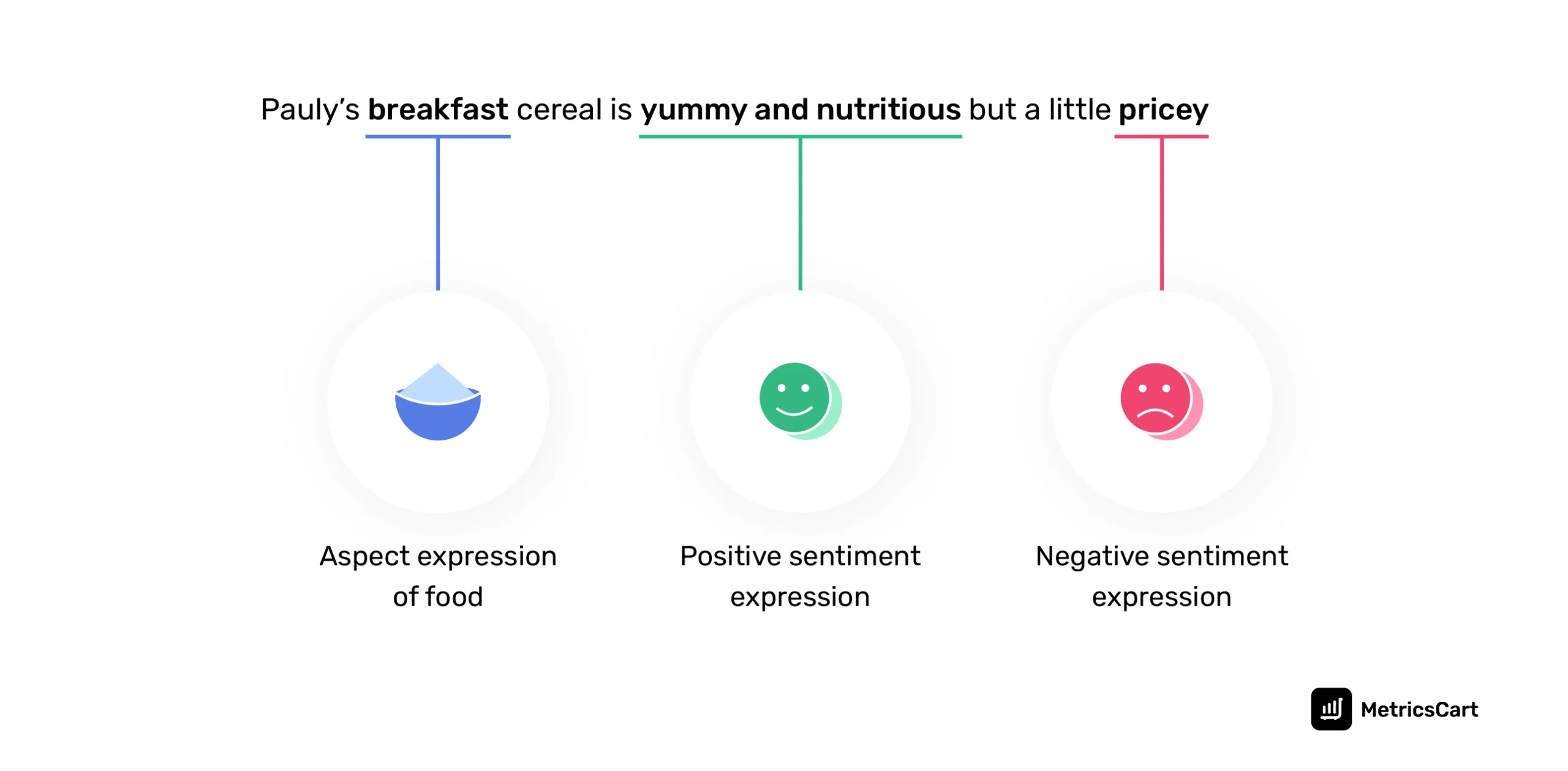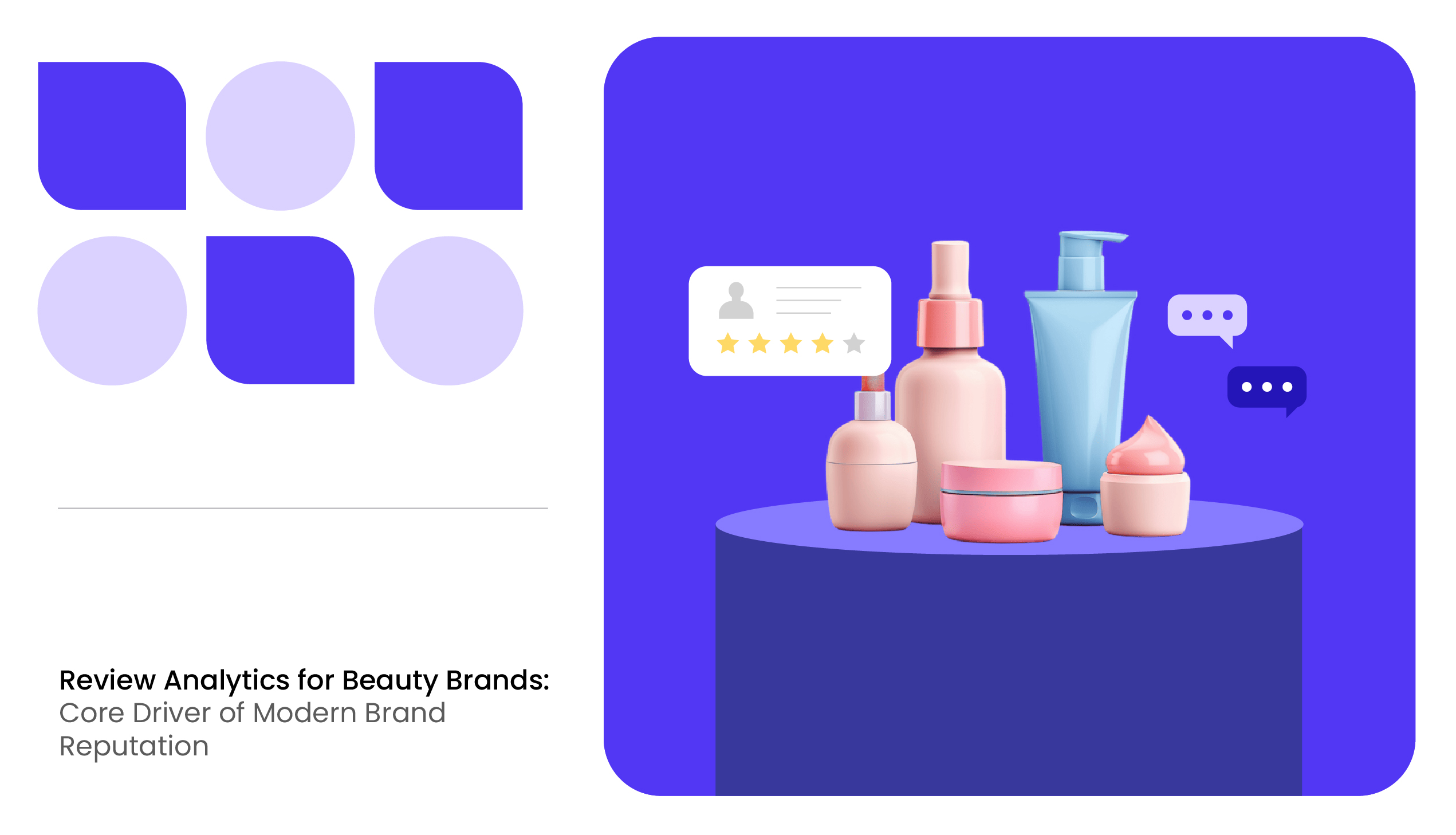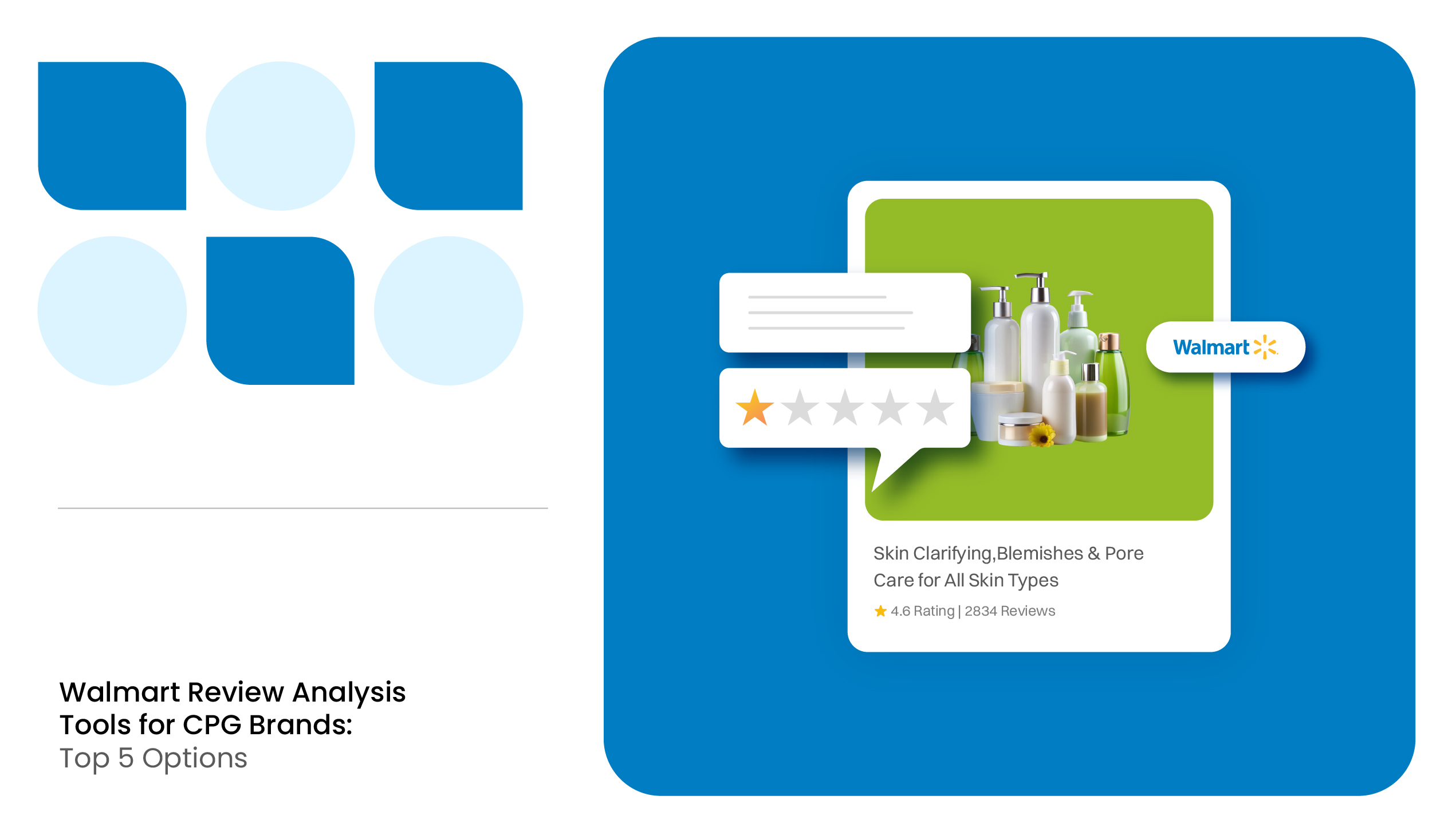In the book Psychology of Persuasion, Robert Cialdini states, “We view a behavior as more correct in a given situation to the degree that we see others performing it.” In the customer journey, ratings and reviews serve as social proof in the shopper’s purchase decisions. For brands, review monitoring helps to manage their online presence and credibility across marketplaces.
How Important Are Customer Ratings and Review Monitoring for a Brand?
In 2023, Amazon announced AI-generated customer review highlights to help customers shop confidently. It allows customers to easily pull reviews that mention specific product attributes and feature key product insights.
In general, customer ratings and reviews help brands to:
- Increase conversion and SEO
- Improve the brand’s authenticity
- Generate insights about products, processes, and purchases
- Analyze positive and negative reviews
- Make product improvements
Review Recency vs. Review Volume: Why Brands Need to Worry?
Findings of Psychological Science using phone cases on Amazon show that customers are more likely to favor a product based on the number of reviews.
When the reviews for a product are between 0 and 1, its conversion rate lifts by over 50%. With an addition of more than ten reviews, the conversion lift increases by 255%.
Review recency and volume go hand-in-hand. Shoppers look for recent reviews before purchasing a brand. This signals the recency bias where people generally tend to give more value to recent reviews over historical ones.
In addition, a brand that has more frequent and recent reviews is likely to be more visible in online search results and ranking.
Read more: How Digital Shelf Analytics Transforms E-commerce Businesses?
Why Online Customer Review Monitoring Matter in E-Commerce?
In 1995, Amazon was the first e-commerce site to allow consumers to post reviews. Back then, critics felt the marketing strategy of posting reviews in public would turn against Amazon.
Today, there are more than 26.5 million e-commerce sites worldwide, and almost all include customer ratings and reviews on their product pages. Measuring customer reviews and ratings online gives an accurate picture of consumers’ perceptions of your brand. For a customer, ratings and reviews of a brand serve as signals in their purchasing decisions.
- Understand Customer Satisfaction Based on Product Attributes
- Perform Sentiment Analysis on Product Reviews
- Analyze Negative Reviews
- Monitor Verified and Non-Verified Reviews
- Identify Product Feature Ideas and Bridge Opportunity Gaps
- Help in Competitive Review Analysis
Understand Customer Satisfaction Based on Product Attributes
Aspect-based sentiment analysis (ABSA) helps to classify and categorize review data by appropriate aspects. Aspects refer to the attributes of a product and vary based on category.

Sentiment analysis is performed based on the aspects of the reviews. This helps arrive at the best and worst features of the products.
The various steps in aspect-level sentiment analysis generally include:
- Extracting the reviews
- Pre-processing
- POS tagging
- Aspect selection
- Classifying reviews into positive and negative
Perform Sentiment Analysis on Product Reviews
Sentiment analysis or opinion mining involves classifying reviews as positive, negative, or neutral. It uses natural language processing (NLP) to understand how consumers feel about the product or the brand. It can be done manually, automatically or hybrid as a mix of both.
MetricsCart’s sentiment analysis serves as a barometer to:
- Guage consumer perceptions of the brands
- Help e-commerce and product teams improve their product detail pages and search ad campaigns to better align with their customer needs
- Identify emerging market trends
- Benchmark shopper sentiment against competitors
Read more: Product Page Optimization Best Practices
Analyze Negative Reviews For Brand Health Benchmarking
Michael Podolsky, Cofounder and CEO of PissedConsumer, a review website says “A mixed bag of positive to critical reviews is certainly more useful to a browsing consumer than a handful of stamp-of-approval testimonials.”
Negative reviews help brands to:
- Track trends and implement changes
- Turn into repeat business
- Show authenticity
- Can direct brand content creation and boost marketing strategy
Additionally, it is key to understand how negative reviews work. When a shopper thinks they and the reviewer are alike, purchase intent drops if they see the one-star review rather than the five-star review.
In contrast, if they felt unlike the reviewer, the one-star review creates higher purchase intent than the five-star review. This is a scenario when consumers identify closely with the brand.
Monitor Verified and Non-Verified Reviews
Fake review brokers solicit shoppers to write fake reviews in exchange for complimentary products, money, or incentives. In exchange for a fee, the defendants leave:
- Fake positive reviews to boost a bad actor’s product ranking
- Fake negative reviews to lower the ranking of a competitor’s product
In June 2023, Amazon filed new lawsuits against users generating fake reviews. To ensure fair practices, Walmart allows review syndication wherein brands can import product reviews from their DTC sites.
MetricsCart monitors verified and non-verified reviews left by consumers across online marketplaces.
Identify Product Feature Ideas and Bridge Opportunity Gaps
Positive reviews may help brands identify additional product features that are not part of their PDP.
Moreover, the user-generated content in the form of pictures and videos within the online product reviews builds trust and authenticity among consumers. It also helps boost conversion rates. On the other hand, negative product reviews may help brands look into product concerns and ideas for further developing the product.

With MetricsCart’s Rating and Review dashboard, brands get a complete view of:
- Product recommendations by customers
- Total reviews for a given period
- Average customer rating
- Word clouds on users’ positive and negative perceptions of a brand
Help in Competitive Review Analysis
With ratings and reviews analysis, brands can gain visibility into the product reviews of their competitor brands within a particular category. Brands can relatively analyze:
- Product ratings
- Customer sentiment
- Word cloud overview
- Aspect-based sentiment analysis
- Verified and non-verified reviews, and more.
MetricsCart offers a unified dashboard for brands to view ratings and reviews of competitors across retailers in one place.
Monitor Online Product Ratings and Reviews with MetricsCart
Tidying up thousands of unstructured reviews manually can be a tedious task. With appropriate digital shelf monitoring solutions like MetricsCart, this dataset can become a goldmine of knowledge.
It can guide decision-making in every aspect of a brand, from customer service to development to long-term planning. Get in touch with MetricsCart today.






